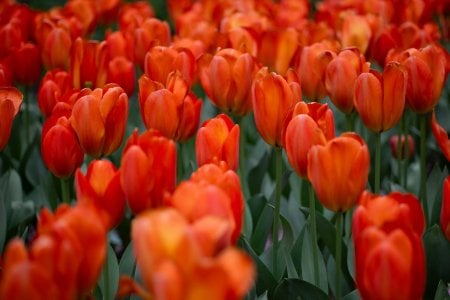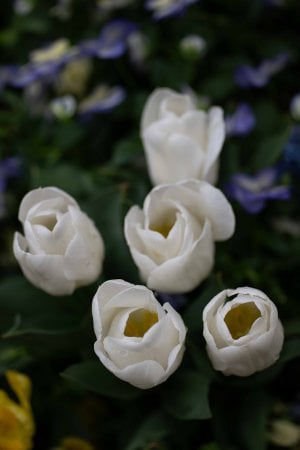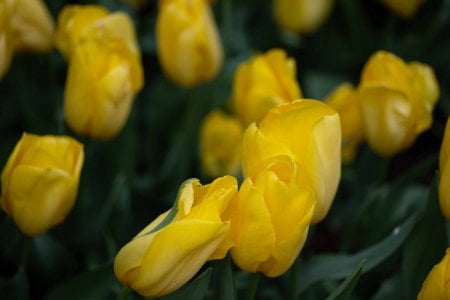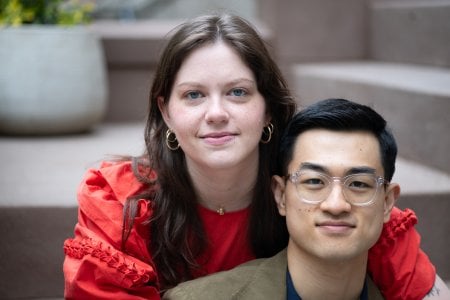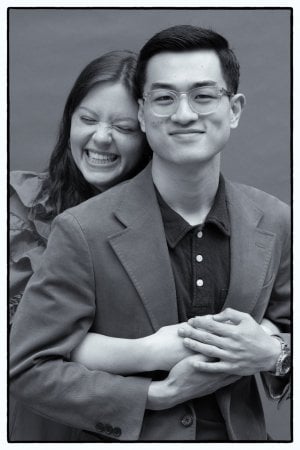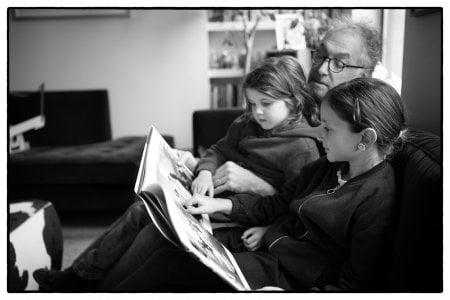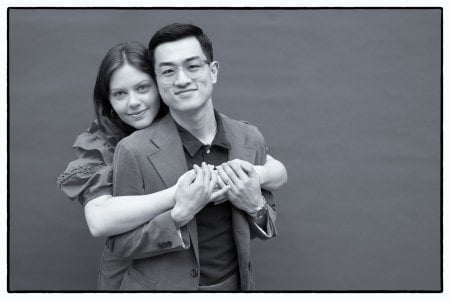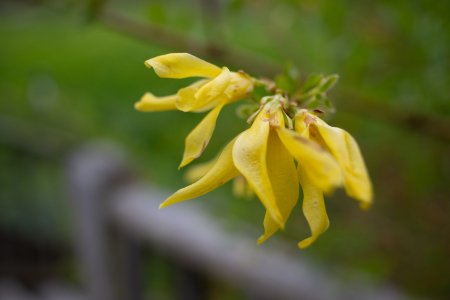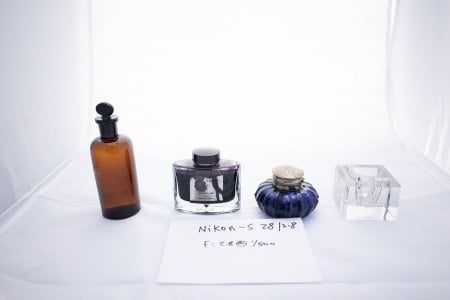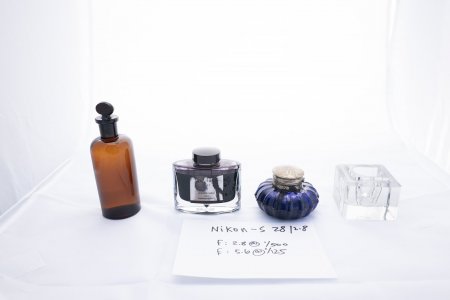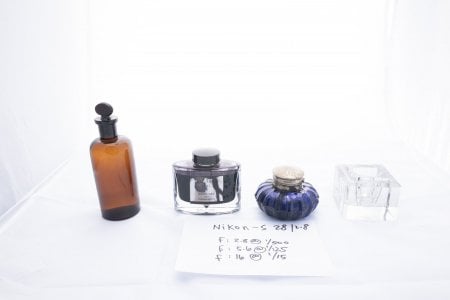Benjamin Marks
Mentor
Just when you thought it was safe to click, I bring you more boring pictures. But here's my excuse: when you want to see what a lens is going to do on a platform, there is no substitute for actually shooting it. So I wanted to look at a couple of Cosina/Voightlander lenses, including a 90/2.8 Apo Skopar that I purchased used from our head bartender. The thing arrived flawlessly clean -- honestly, I can't tell the difference between this thing and a new lens. The lens is in Nikon-F/AiS mount but is chipped so that the Z8's auto-aperture control works nicely with it. The resolution on this thing is pretty great, and I like the OOF areas -- crucial for me in a short tele that will be used for portraits.
Here's a snapshot of a clothesline with the Apo-Skopar wide open that will give you all a good sense of what happens as the zone of focus recedes from the plane of focus:
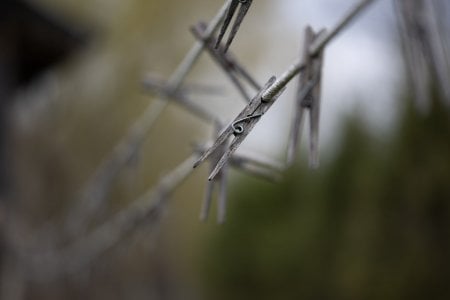
I like that transition. Here's a 100% crop, which held a little surprise for me (not aware when the original picture was taken):
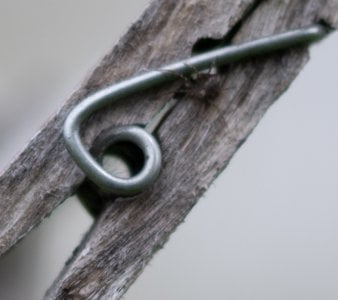
That's right. There is a tiny spider hitching a photo ride on this clothespin. The little arachnid was so small, I didn't know it was there until I did my 100% crop to look at the resolution on the wood grain. Side-effect of all that camera resolution at 46 MP.
Here's another example of the APO-Skopar's resolving power on this camera. Here's a head-on shot of the clothespins at f:5.6 to show the lens' treatment of distant OOF areas (about 40 yards to the back fence).
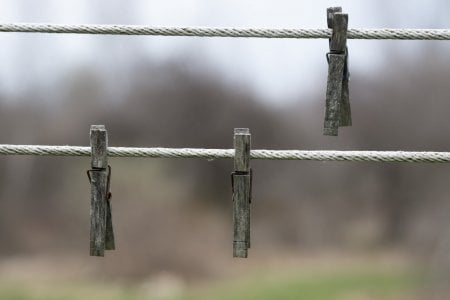
And here are spider webs (probably of the little guy in the first picture) at 100%, that are invisible in the "normal" size image:
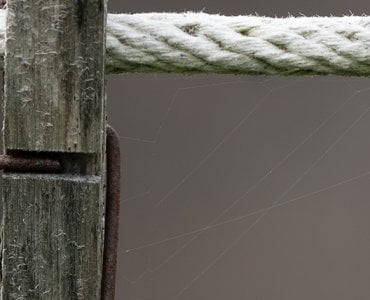
Remarkable, if you ask me.
Here's a snapshot of a clothesline with the Apo-Skopar wide open that will give you all a good sense of what happens as the zone of focus recedes from the plane of focus:

I like that transition. Here's a 100% crop, which held a little surprise for me (not aware when the original picture was taken):

That's right. There is a tiny spider hitching a photo ride on this clothespin. The little arachnid was so small, I didn't know it was there until I did my 100% crop to look at the resolution on the wood grain. Side-effect of all that camera resolution at 46 MP.
Here's another example of the APO-Skopar's resolving power on this camera. Here's a head-on shot of the clothespins at f:5.6 to show the lens' treatment of distant OOF areas (about 40 yards to the back fence).

And here are spider webs (probably of the little guy in the first picture) at 100%, that are invisible in the "normal" size image:

Remarkable, if you ask me.
Last edited:
Benjamin Marks
Mentor
Keeping with the last post and exploring the bench depth of what the C/V lenses can do: Here are some snaps with the C/V 50/3.5 Heliar LTM in brushed nickel, adapted in various ways to the Z8 (LTM to M adapter, clicked into a FotoDiox helical adapter). Set up looks mildly ridiculous (but fun to my eye).
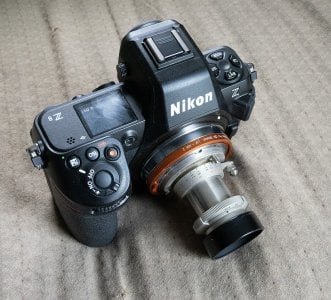
Kids, if you try this at home: DO NOT collapse that nickel Heliar while it is on the camera. I only eyeballed it, but broke out into a sweat when I did so. When this lens came out, Cameraquest quoted Herb Kepler saying something like "This wild but fascinating super classically styled camera comes in four delicious flavors and has what may be the best lens we have ever tested." Yikes! And yes, the thing screams quality in manufacture. But how does it play with the Nikon Z8?
Turns out, pretty nicely:

My only quibble is with the minimum focus distance, but the Fotodiox helical adapter takes care of that:
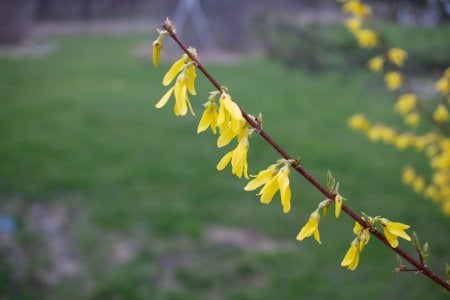
The obligatory 100% crop:
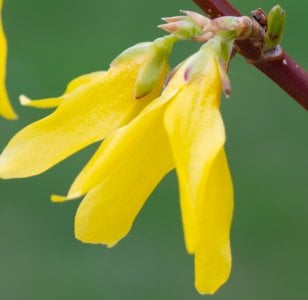
Now here's another surprise: look on the right side of the picture between the forsythia bloom and the stalk. See that gossamer strand? That's a bit of spiderweb that is thinner than a human hair. Not an important compositional element of this image, but YOIKS the resolving power of this thing is pretty amazing.
In the provisional analysis: I am REALLY going to enjoy using the Cosia/Voitlander lenses on this thing. Mr. Kobyashi has some really solid designs out there, that seem to prioritize image quality over pure speed. The Z8's noise handling properties pretty much mean that what seemed like a moderate-to-slow lens 10 years ago, can now be used in many, many natural light situations.

Kids, if you try this at home: DO NOT collapse that nickel Heliar while it is on the camera. I only eyeballed it, but broke out into a sweat when I did so. When this lens came out, Cameraquest quoted Herb Kepler saying something like "This wild but fascinating super classically styled camera comes in four delicious flavors and has what may be the best lens we have ever tested." Yikes! And yes, the thing screams quality in manufacture. But how does it play with the Nikon Z8?
Turns out, pretty nicely:

My only quibble is with the minimum focus distance, but the Fotodiox helical adapter takes care of that:

The obligatory 100% crop:

Now here's another surprise: look on the right side of the picture between the forsythia bloom and the stalk. See that gossamer strand? That's a bit of spiderweb that is thinner than a human hair. Not an important compositional element of this image, but YOIKS the resolving power of this thing is pretty amazing.
In the provisional analysis: I am REALLY going to enjoy using the Cosia/Voitlander lenses on this thing. Mr. Kobyashi has some really solid designs out there, that seem to prioritize image quality over pure speed. The Z8's noise handling properties pretty much mean that what seemed like a moderate-to-slow lens 10 years ago, can now be used in many, many natural light situations.
Benjamin Marks
Mentor
Finally: I'd be remiss if I didn't note that the 50/3.5 Heliar has a little light fall off at its widest aperture -- maybe a stop (?). Here's a boring picture of my grey deck so you can see what it does in the corners. Uncorrected:
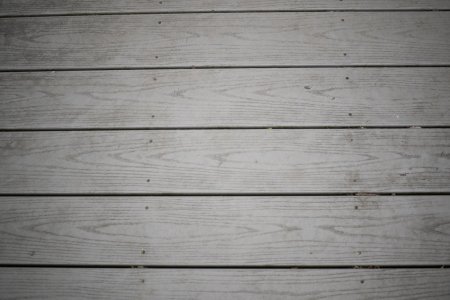
And corrected using CameraRAW's Voigtlander 50/3.5 Heliar profile and a skosh of vignetting correction:
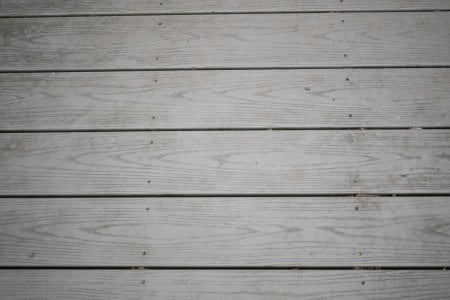
Hope you all can see the difference. It is pretty clear on my monitor.

And corrected using CameraRAW's Voigtlander 50/3.5 Heliar profile and a skosh of vignetting correction:

Hope you all can see the difference. It is pretty clear on my monitor.
Benjamin Marks
Mentor
I started a separate mini-thread about the Z8's IR response here:
Nikon Z8 IR Response (pix)
Here's one of the snaps with the Leica 35 Summaron/f:3.5 with a B&W 39mm 093 IR pass filter:
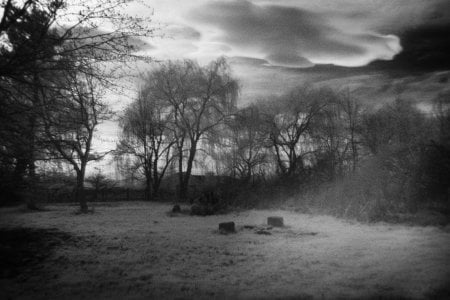
On the IR pix, it's always the sky that gets me. I think shooting with a tripod would be the way to go here. The camera's IBIS isn't up to 1-2 second exposures handheld. See the bright area on the lower right hand side of the picture? That's what I mean an uneven IR response. That's not an artifact of the Leica lens -- I took a baseline picture without the IR pass filter and the lens performs fine on the camera, with a stop or two of light fall-off in the corners.
Nikon Z8 IR Response (pix)
Here's one of the snaps with the Leica 35 Summaron/f:3.5 with a B&W 39mm 093 IR pass filter:

On the IR pix, it's always the sky that gets me. I think shooting with a tripod would be the way to go here. The camera's IBIS isn't up to 1-2 second exposures handheld. See the bright area on the lower right hand side of the picture? That's what I mean an uneven IR response. That's not an artifact of the Leica lens -- I took a baseline picture without the IR pass filter and the lens performs fine on the camera, with a stop or two of light fall-off in the corners.
Last edited:
Freakscene
Obscure member
It’s an IR hotspot. A lot of lenses with even visible light transmission have hotspots when used for IR or UV. Conversely, some quartz element lenses that are optimised for UV and IR like the Coastal Optics 60mm UV-VIS-IR macro can have hotspots with visible light.I started a separate mini-thread about the Z8's IR response here:
Nikon Z8 IR Response (pix)
Here's one of the snaps with the Leica 35 Summaron/f:3.5 with a B&W 39mm 093 IR pass filter:
View attachment 4836570
On the IR pix, it's always the sky that gets me. I think shooting with a tripod would be the way to go here. The camera's IBIS isn't up to 1-2 second exposures handheld. See the bright area on the lower right hand side of the picture? That's what I mean an uneven IR response. That's not an artifact of the Leica lens -- I took a baseline picture without the IR pass filter and the lens performs fine on the camera, with a stop or two of light fall-off in the corners.
Marty
Benjamin Marks
Mentor
That's interesting, Marty, and helpful. If I recall, the lens did not exhibit that behavior on the M8 or M9. I will have to do an M9 head-to-head comparison this weekend.
Benjamin Marks
Mentor
Benjamin Marks
Mentor
Benjamin Marks
Mentor
Benjamin Marks
Mentor
johnsonjj22
Analog Enlightenment
Z8 with the Leica Summicron 50 f/2 "v.III" - I'd like to do more with my manual focus glass and focus-peaking, but it needs to be a time when I can chill for a bit and not worry about delivering work. I kinda miss the halation with the highlights though, as opposed to shooting film. If I'm going to go through the work of manual-focus, I want also the rest of the "look".
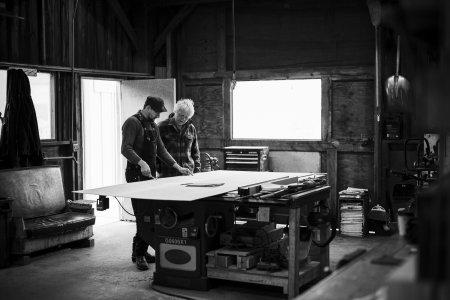

Benjamin Marks
Mentor
I tried using focus peaking in the first few weeks I had the camera. I found it less useful than the magnification button on the back for hitting critical focus. The workflow with this method isn't great, because you have to keep removing the camera from your eye to push the button in order to make the magnification feature work. But the results on single shots are great (at least for the kind of portraits I take -- my POF tends to be the subjects' eyes).Z8 with the Leica Summicron 50 f/2 "v.III" - I'd like to do more with my manual focus glass and focus-peaking, but it needs to be a time when I can chill for a bit and not worry about delivering work. I kinda miss the halation with the highlights though, as opposed to shooting film. If I'm going to go through the work of manual-focus, I want also the rest of the "look".
@Benjamin Marks on my Z6 I assigned the magnification function to another button, so can keep using the vf. Not sure how this may differ from the Z8. I've had good luck getting critical eye focus.
It would be a helluva lot easier using native Z lenses, but I just like my adapted lenses! Enjoyed a trip to west Texas a couple of weeks ago with a set of Nikkors, 24/2.8 and 85/1.8.
It would be a helluva lot easier using native Z lenses, but I just like my adapted lenses! Enjoyed a trip to west Texas a couple of weeks ago with a set of Nikkors, 24/2.8 and 85/1.8.
johnsonjj22
Analog Enlightenment
My Z8 is setup to use Fn1 as the 100% focus, so I do a bit of both focus peaking and zoom. I also heavily use memory banks, and have one setup for this manual focus, zoom, focus peaking stuff.
I assigned focus zoom to the AF-ON button on my Z6.
tcmx3
Established
Contax 85/1.4 @ f:5.6. EXIF data says "50 mm" but it is really the Contax 85.
View attachment 4837232
Compare and contrast with the Pentax 100/2.8 SMC-A mount:
View attachment 4837233
or the native 105/2.8-S:
View attachment 4837234
Gotta say, those native Nikon-S lenses really get the job done.
The 105 is a winner, and one of the best lenses in the system (along with the 50/1.8S which you've also shown off, and which like the 105 I own and adore) as best I can tell, along with the 20/1.8, the 14-28 and 70-200 2.8Ses, and the f1.2/.95 lenses. In fact, the 14-28/2.8S is currently on sale and I'm having a hard time resisting. I don't like zooms but at the ultra-wide end they make more sense to me.
Benjamin Marks
Mentor
A comparison of old and new 28's. A recent thread about favorite 28's got me thinking about what the differences optically might be between a brand new state-of-the-art Voightlander 28/2.8 in Nikon AiS mount and an early 1960's era Pentax thread-mount Takumar 28/3.5. As I mentioned in that other thread, I don't notice a ton of difference between the details rendered of my 28s. . . possibly my fault perceptually. One difference between the two lenses: the C/V lens focuses waaaay closer. Like the older Pentax close-focuses to 1.3 feet (minus a little) and the C/V lens focuses around 6 inches.
So here's a snapshot from a moment ago at the Pentax's minimum focus distance and f:5.6:
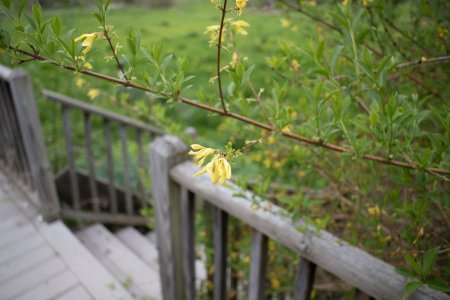
You can see a little fall off at the edges, but nothing too terrible. OOF areas seem smooth to me, detail is great. Here's a 100 percent crop from the center of the image:
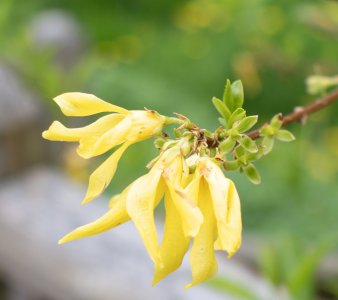
So that's a lens that is on the order of 60 years old (plus or minus). Basically, I could do anything I want with that from a street photography perspective. The lens cost $75 including the M42/Pentax-K adapter. Not exactly free, but pretty close to it in photo-land.
So here's the best of what C/V can produce (and they are producing some verrrrry nice lenses these days):
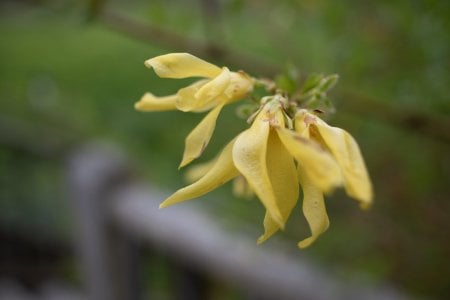
For some reason the conversion to jpg always seems to rob my pix of a little saturation. But to keep this apples-to-crabapples I have left the sliders alone for the most part (all the pix got a 0.4 stop boost on exposure in PS). The obvious difference is that this shows how much closer I can get with the modern lens. There is a bit more highlight preservation too. The immediately above picture is NOT a 100% crop -- it's what the C/V lens put on the sensor. Would that be a big deal for street photography? Probably not, at least not the way I do it. I am not a front-element-threatening-to-touch-your-nose sort of photographer. So I am using the 28 to get a little more context in the frame. So I took a step back and snapped again.
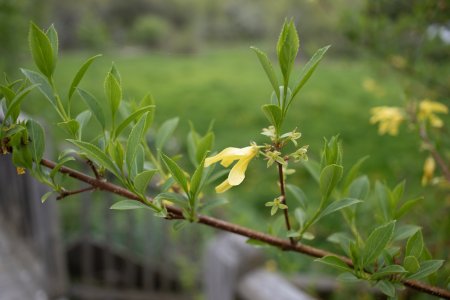
To give a sense of the comparison, here's what the C/V lens is like at about 1.3 feet. Snappy. Detailed. Smooth OOF areas. I mean, what's not to like? I guess the C/V image is a bit more contrasty than the Pentax. But only a bit. Light on the day was even and overcast. Both lenses were set at f:5.6.
So there you have it.
So here's a snapshot from a moment ago at the Pentax's minimum focus distance and f:5.6:

You can see a little fall off at the edges, but nothing too terrible. OOF areas seem smooth to me, detail is great. Here's a 100 percent crop from the center of the image:

So that's a lens that is on the order of 60 years old (plus or minus). Basically, I could do anything I want with that from a street photography perspective. The lens cost $75 including the M42/Pentax-K adapter. Not exactly free, but pretty close to it in photo-land.
So here's the best of what C/V can produce (and they are producing some verrrrry nice lenses these days):

For some reason the conversion to jpg always seems to rob my pix of a little saturation. But to keep this apples-to-crabapples I have left the sliders alone for the most part (all the pix got a 0.4 stop boost on exposure in PS). The obvious difference is that this shows how much closer I can get with the modern lens. There is a bit more highlight preservation too. The immediately above picture is NOT a 100% crop -- it's what the C/V lens put on the sensor. Would that be a big deal for street photography? Probably not, at least not the way I do it. I am not a front-element-threatening-to-touch-your-nose sort of photographer. So I am using the 28 to get a little more context in the frame. So I took a step back and snapped again.

To give a sense of the comparison, here's what the C/V lens is like at about 1.3 feet. Snappy. Detailed. Smooth OOF areas. I mean, what's not to like? I guess the C/V image is a bit more contrasty than the Pentax. But only a bit. Light on the day was even and overcast. Both lenses were set at f:5.6.
So there you have it.
Benjamin Marks
Mentor
Benjamin Marks
Mentor
There have been some questions raised about the performance of various legacy 28mm lenses on the Z line of cameras, and in particular how the 28/2.8-S mount native lens, with its design bias towards being a lightweight, compact travel lens stacks up.
There have also been questions about the performance of retrofocal (SLR) vs. non-retrofocal (RF) lenses on this platform. I have a few 28mm lenses of various brands/designs and thought I could shed some light on the question with some practical examples. Among the lens in this simple comparison: the Leica 28 Summicron, the Zeiss ZM Biogon, the Contax G-Biogon, the Nikon 28/2 AiS, Nikon 28/2.8 AF-D, the Pentax SMC-A 28/2.8, the Contax 28 Distagon/2.8, a new Voightlander 28 Ultron in AiS mount and as noted.
The set-up was a Neewer 24x24 inch light tent set up in the sun, camera on tripod, Nikon Z8 set to Manual exposure and readings taken with a handheld Minolta meter. For each exposure/lens combination I noted the lens used on an index card so that you all could scroll between shots and easily see what lenses were being used. Three shots for each lens (f:2.8, 5.6 and 16, but the Nikon f:2 and the Summicron also got a shot wide open, so four shots). Why three apertures and not all of them? 'Cause Jeezum Crow, I have other things to do in a day.
A couple of notes: I took the reference shot with the Nikon-S mount lens. And when I went to mount the first RF lens, I saw that its minimum focus distance was too far out. All the RF pictures were shot with a helical adapter allowing them to match the close-focus distance of the SLR lenses. This is another thing to consider if making a comparison: the RF design only lets you get to about three feet or so. I get it. These are not macro lenses. But keep in mind ooching the lens iris away from the sensor should improve the vignetting a skosh. I did not compensate in exposure, though when using the helical. If you think that the test is a bit biased because there is no extra exposure dialed in to compensate for the helical on the RF lenses, consider that the Summicron and the Zeiss ZM Biogon sort of serve as controls for one another.
Edit: here's a little irony. Since all my 28's were on the table, the picture of all the 28's was taken with the Nikon 24/1.8, which is shaping up to be a fine addition to the stable.
I can bottom line the results for you: All the 28's show at least some vignetting wide open. The SLR lenses improved faster when stopped down than the RF lenses. My beloved 28/2 Summicron was among the worst performers in terms of vignetting, but fear not: even at f:2 its vignetting can be corrected in PS Camera RAW, although for reasons known only to Adobe, the Leica lens profiles have no vignetting slider -- you have to process the image as if it were a Zeiss ZM, which has the full complement of tools in the profile. I'll address that in the last post in this string. Here's the beauty shot of all the 28's.
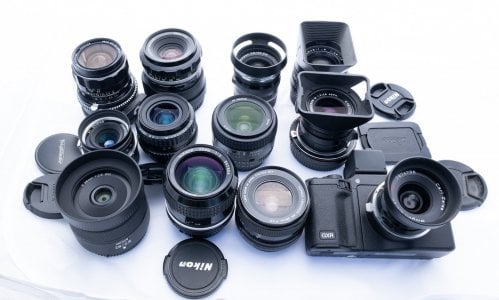
There have also been questions about the performance of retrofocal (SLR) vs. non-retrofocal (RF) lenses on this platform. I have a few 28mm lenses of various brands/designs and thought I could shed some light on the question with some practical examples. Among the lens in this simple comparison: the Leica 28 Summicron, the Zeiss ZM Biogon, the Contax G-Biogon, the Nikon 28/2 AiS, Nikon 28/2.8 AF-D, the Pentax SMC-A 28/2.8, the Contax 28 Distagon/2.8, a new Voightlander 28 Ultron in AiS mount and as noted.
The set-up was a Neewer 24x24 inch light tent set up in the sun, camera on tripod, Nikon Z8 set to Manual exposure and readings taken with a handheld Minolta meter. For each exposure/lens combination I noted the lens used on an index card so that you all could scroll between shots and easily see what lenses were being used. Three shots for each lens (f:2.8, 5.6 and 16, but the Nikon f:2 and the Summicron also got a shot wide open, so four shots). Why three apertures and not all of them? 'Cause Jeezum Crow, I have other things to do in a day.
A couple of notes: I took the reference shot with the Nikon-S mount lens. And when I went to mount the first RF lens, I saw that its minimum focus distance was too far out. All the RF pictures were shot with a helical adapter allowing them to match the close-focus distance of the SLR lenses. This is another thing to consider if making a comparison: the RF design only lets you get to about three feet or so. I get it. These are not macro lenses. But keep in mind ooching the lens iris away from the sensor should improve the vignetting a skosh. I did not compensate in exposure, though when using the helical. If you think that the test is a bit biased because there is no extra exposure dialed in to compensate for the helical on the RF lenses, consider that the Summicron and the Zeiss ZM Biogon sort of serve as controls for one another.
Edit: here's a little irony. Since all my 28's were on the table, the picture of all the 28's was taken with the Nikon 24/1.8, which is shaping up to be a fine addition to the stable.
I can bottom line the results for you: All the 28's show at least some vignetting wide open. The SLR lenses improved faster when stopped down than the RF lenses. My beloved 28/2 Summicron was among the worst performers in terms of vignetting, but fear not: even at f:2 its vignetting can be corrected in PS Camera RAW, although for reasons known only to Adobe, the Leica lens profiles have no vignetting slider -- you have to process the image as if it were a Zeiss ZM, which has the full complement of tools in the profile. I'll address that in the last post in this string. Here's the beauty shot of all the 28's.

Last edited:
Benjamin Marks
Mentor
Share:
-
This site uses cookies to help personalise content, tailor your experience and to keep you logged in if you register.
By continuing to use this site, you are consenting to our use of cookies.


